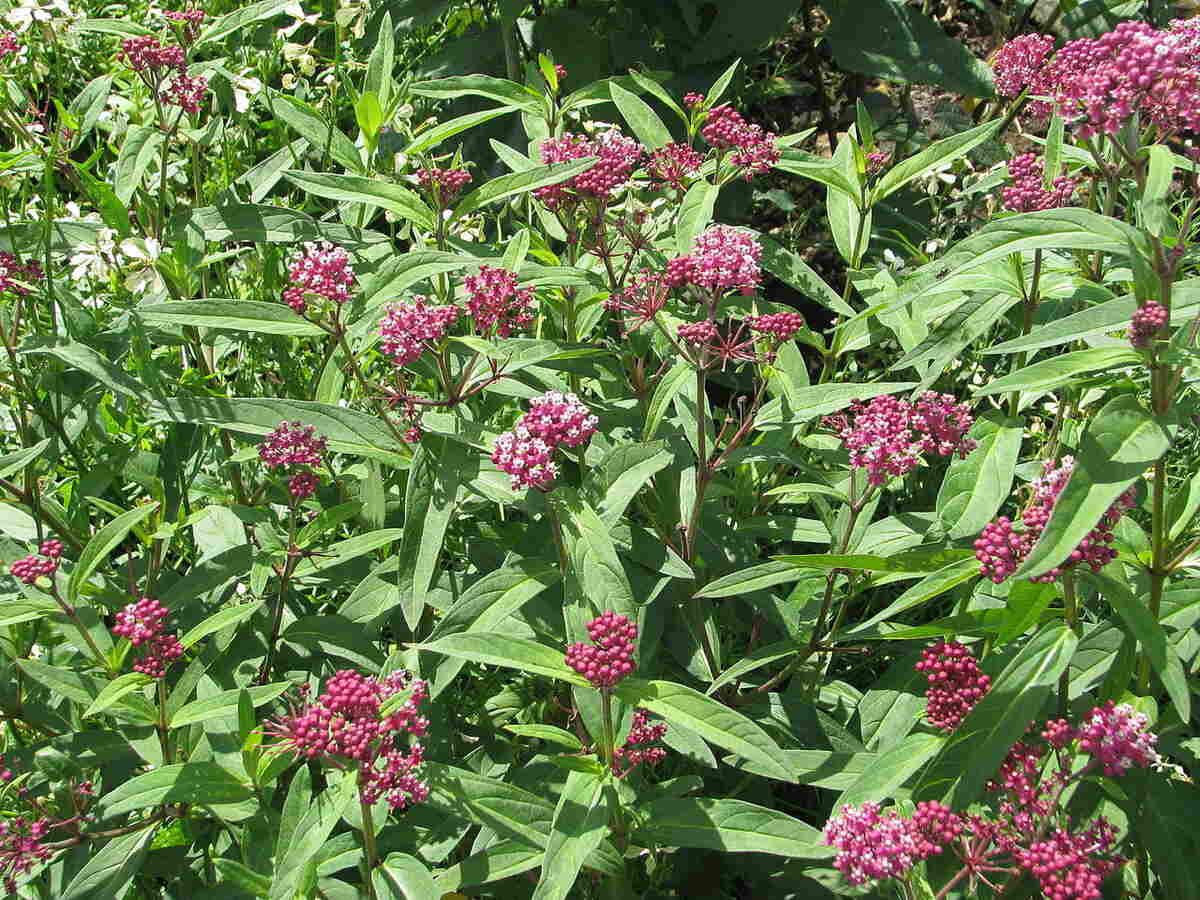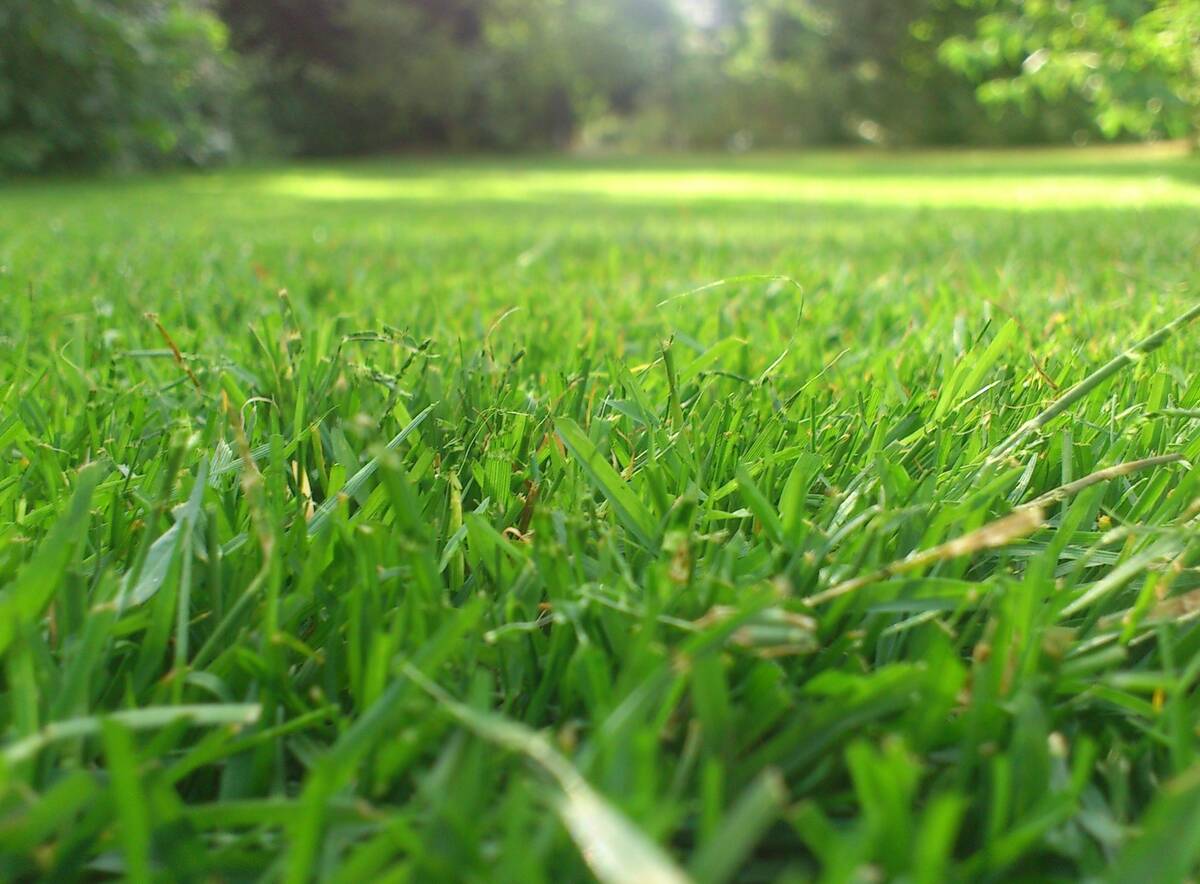
Keeping a healthy lawn in the Diamond State is often a frustrating roller-coaster. You enjoy a few months of friendly weather and good growth, then summer heat or winter freeze puts everything on pause. Here are the best lawn care tips for Delaware to help you navigate the ups and downs of growing turf year-round.
10 Lawn Care Tips to Follow Year-Round in Delaware

First, we’ll cover the basic lawn care tasks you should perform no matter the season to keep your Delaware lawn looking its best. Our tips cover everything from planting new grass to keeping it healthy in the long run.
1. Choose the Right Type of Grass
The first step in growing a healthy lawn here is choosing the best type of grass for Delaware. If your yard has many shaded areas, look for a seed mix with fine or tall fescue.
Ryegrass and Kentucky bluegrass are the best choices for sunny yards with playful pets and children running around. They thrive in direct sunlight and have good traffic tolerance.
Kentucky bluegrass is also the top choice for northern Delaware lawns in Wilmington, Newark, or New Castle. On the other hand, summer homes along the coast can improve their curb appeal with Zoysia, a warm-season grass.
2. Let the Grass Guide the Mowing Schedule
A fixed mowing schedule, like cutting the grass every Friday, is easy to keep. But since grass sometimes grows at different speeds, you need to adapt your mowing schedule throughout the growing season.
Your grass can grow slower or faster depending on the following:
- Rainfall
- Temperature
- Sunlight exposure
If you neglect to notice the changes, you can cut the grass too short or leave it to grow too tall.
Short grass has less leaf surface for photosynthesis (or a smaller kitchen to prepare food using soil nutrients and sunlight). Low energy makes it more vulnerable to stress, diseases, and pests.
When the grass grows too tall, most of the blade surface is in shade, and photosynthesis is again limited. Also, tall grass keeps moisture at the soil level, which promotes fungal diseases in cool temperatures.
Growing speed also varies with the type of grass. If your neighbor has a tall fescue lawn and you grow hard fescue, you will have a different mowing schedule. Hard fescue grows slower than tall fescue.
To maintain the turf at the best level, observe its growth or measure its height with a ruler when it’s time to mow. Here are the recommended mowing heights for the most common grasses that grow in Delaware:
| Type of Grass | Mowing Height |
| Turf fescue | 2 to 3 inches |
| Fine fescue | 2.5 to 4 inches |
| Kentucky bluegrass | 2.5 to 3.5 inches |
| Perennial ryegrass | 1.5 to 2.5 inches |
| Zoysia | 1 to 2 inches |
3. Follow the One-Third Rule
Every time you mow, only cut the top one-third of the grass’s height. For example, if your lawn is 3 inches tall, cut the top 1 inch. You’ll get it to a suitable size of 2 inches. Taking more than one-third of the blade makes it harder for the grass to adapt to less surface for photosynthesis and to repair the cut.
4. Alternate the Mowing Pattern
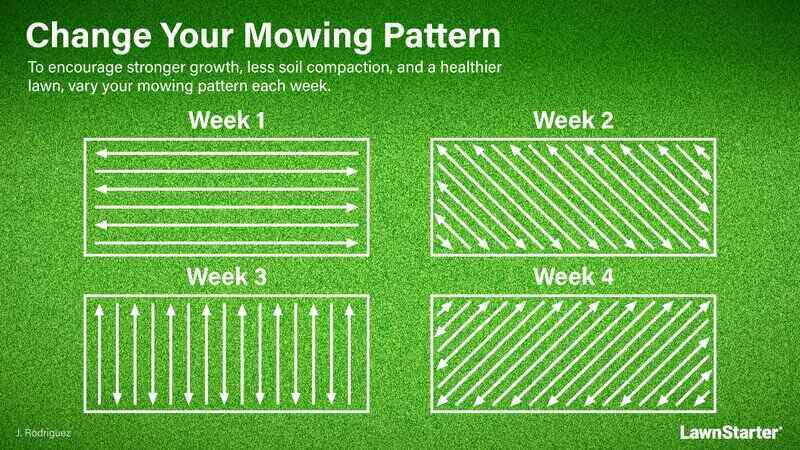
Foot traffic and the weight of your mower compress the ground and damage the grass over time. To avoid visible trails in your lawn, alternate the mowing pattern. If you walked the lawn mower parallel to the house last week, mow perpendicular to it this time.
5. Leave the Grass Clippings on the Lawn
Let the small grass clippings on the lawn. They are an excellent source of slow-release nitrogen.
Only leave small grass clippings, like those chopped up by a mulching lawn mower, sitting on the lawn. Tiny pieces of grass decompose easier and don’t add to the thatch layer. You can add cut grass to your compost bin or use it as mulch for flower beds and vegetable plots.
Warning! Don’t leave grass clippings on the lawn when you’ve got flowering or seeding weeds in your grass.
Shop mulching lawn mowers:
6. Water Deeply and Only When Needed
Right on the coast of the Atlantic Ocean, Delaware enjoys constant rainfall across the year. From March to October, lawns get, on average, 3 to 4 inches of rainwater per month. This can be enough to sustain your lawn in early spring and late fall when the grass is less active and the weather is cool. You may not need to water your lawn during these times of the year.
However, Delaware summers are hot enough to dry the soil when it doesn’t rain for a few days. This is when you should irrigate the lawn more often. A good rule of thumb, no matter the season, is to water the grass only when it shows signs of stress, including:
- About 30% to 50% of the blades wilt.
- The grass gets a grey, bluish tint.
- It recovers slower when you step on it.
Irrigate slowly to moisten the soil 4 to 6 inches deep. This typically takes about 1 to 1.5 inches of water applied over 2 to 4 hours.
7. Use a Moisture Sensor
Install a moisture sensor on your sprinkler system. Delaware receives plenty of rain to increase the risk of overwatering your lawn. Cool spring and fall nights expose the grass to fungal diseases when overwatered.
A moisture sensor blocks the irrigation system when it’s raining and can delay the next watering session. You can rely on an automatic sprinkler system without worrying about too much moisture in the soil.
8. Fertilize Cool-Season Grasses in the Fall (And Maybe Again in Spring)
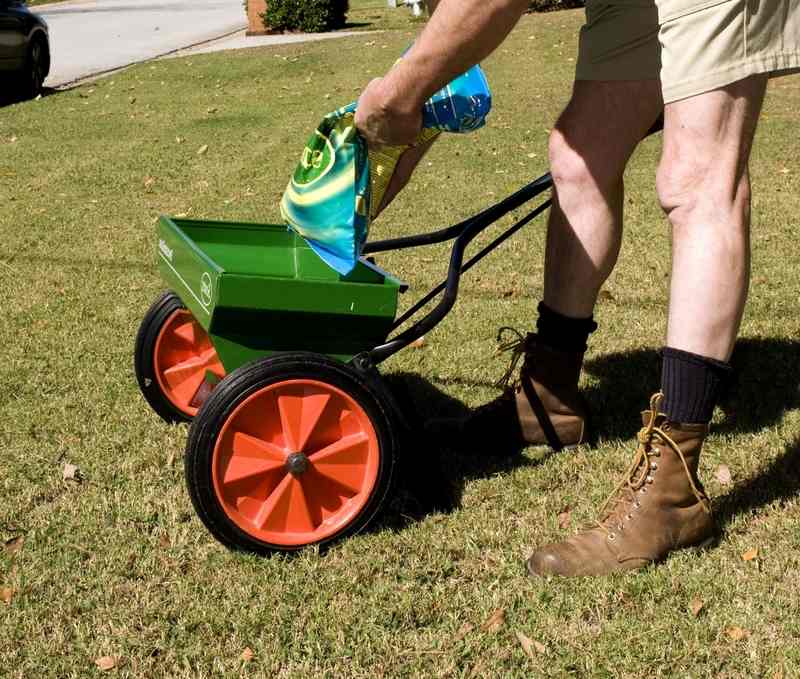
Apply 65 to 75% of the annual fertilizer during the fall and use the rest in the spring. Cool-season grasses that cover most lawns in Delaware go semi-dormant in the summer and require fewer nutrients during that time. In late summer and early fall, they’re actively growing and storing reserves for winter and the following year.
In the spring, grass sprouts use the energy reserves that were gathered in the previous fall and winter. Most healthy lawns don’t require fertilizer during spring, but you can apply a small amount of slow-release formula to stimulate green-up.
9. Overseed Two Times a Year
Although its coastal location softens the weather, Delaware’s climate has hot and dry summers and frigid winters that stress turfgrasses.
Check for thinned areas and bald patches in early March and late August. Overseed the lawn in the spring and fall to keep the grass dense and weeds under control.
10. Make a Lawn Care Schedule
Create a simple, easy-to-follow lawn maintenance program to remember the essential tasks you must handle each season. Use the schedule below as an example, but be sure to adjust as needed for your grass type and your specific area’s weather.
| Spring | ● Remove debris from the lawn. ● Pull out any weeds. ● Dethatch and aerate. ● Apply a pre-emergent herbicide. ● Check the mower and irrigation system. ● Water only when needed. ● Spread a small amount of fertilizer. ● Overseed to thicken the lawn and repair bald patches. ● Start mowing. Leave the clippings on the lawn. ● Watch out for pests. ● Prevent lawn diseases. |
| Summer | ● Mow the grass taller. ● Let cool-season grasses enter summer dormancy if it gets too hot. ● Water and fertilize summer grasses. ● Get rid of summer weeds. |
| Fall | ● Rake fallen leaves. ● Get rid of weeds. ● Mow the grass shorter. ● Dethatch and aerate late August to mid-September. ● Overseed thin areas and bald patches from August 15 to September 30. ● Fertilize by mid-October. ● Water only when needed. ● Winterize sprinkler system in late fall. ● Clean, repair, and prepare tools for winter. |
| Winter | ● Test and amend soil pH. ● Keep salt, foot traffic, and objects away from the lawn. ● Plan for the next season. |
Find more detail about these seasonal lawn care tips for Delaware below.
Spring Lawn Care Tips for Delaware

Spring is one of the busiest seasons for lawn owners across the First State. It’s time to prepare the tools for work, the lawn for sprouting grass, and make a plan to keep weeds and pests under control.
Get Your Lawn Mower Ready in Early Spring
With cool-season grasses in most yards, lawn care season starts early in Delaware. Check, repair, and prepare your tools and lawn mower in early spring:
- Replace the spark plugs. Change the air and oil filter.
- Put in new oil and buy fresh gas.
- Clean the mower deck of any grass clippings and other debris.
- Check the mower blades for signs of wear and tear (dents, chips). Replace damaged blades with new ones.
- Sharpen the blades if they don’t need replacing.
Clean-Up the Lawn
Charming and relaxing Delawarean communities pride themselves on neat, clean lawns. When the spring comes, and it is warm enough to enjoy working outside, start to get yours into shape:
- Remove fallen branches, twigs, rocks, and other large debris from the lawn.
- Rake fallen leaves, acorns, sticks, dead roots, and stems.
- Install new landscape edging or spruce up and repair the old edging.
As you clean, avoid making piles of debris on the lawn or near it. They attract pests and can develop fungi.
Aerate the Lawn
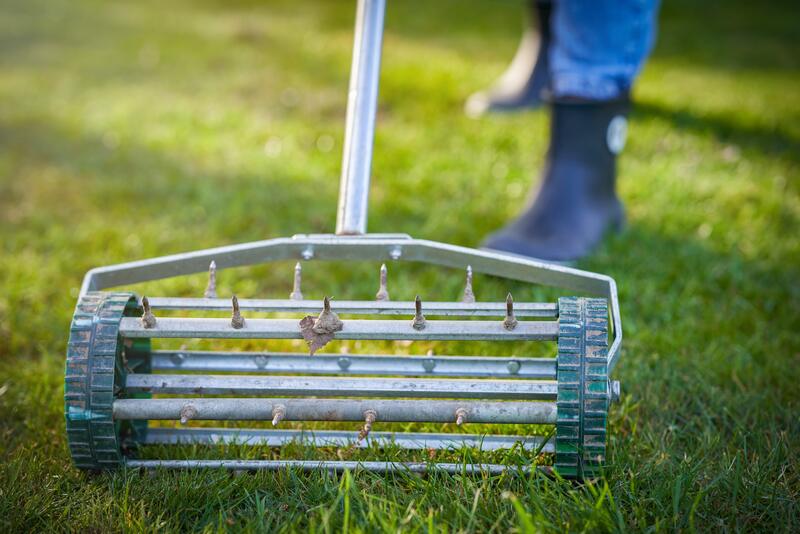
Heavy rainfall and foot traffic compact the soil, making it harder for water, nutrients, and air to access the grassroots. To improve absorption and drainage, you must aerate the lawn every one or two years. Do it in the spring with a core aerator to prepare the ground for new growth.
Core aerators pull out hundreds of small soil plugs, leaving behind tiny holes that help the ground breathe easier. Water and nutrients use them like tunnels to get to the root systems.
You can rent a core aerator from Home Depot or a local garden shop to work on a small lawn. For larger properties, it’s typically better to hire a professional lawn aeration service.
Overseed the Lawn
A dense, healthy lawn keeps weeds at bay naturally. It also limits water evaporation during drought and keeps the ground cool in high heat.
Spring is the second best time to overseed in Delaware, after fall. Since summer is coming, seedlings planted in spring will have to compete with weeds for nutrients, water, and light. But it’s the only time to cover bare patches and thin areas you missed last fall.
Overseed after aeration. It helps seeds germinate easier and develop deep roots.
Pro tip: Use this opportunity to improve the quality and resilience of your lawn. Add better grasses or grass mixtures to your turf. Overseeding kits are available online and in local stores.
Shop grass seed blends:
Spread a Small Amount of Fertilizer
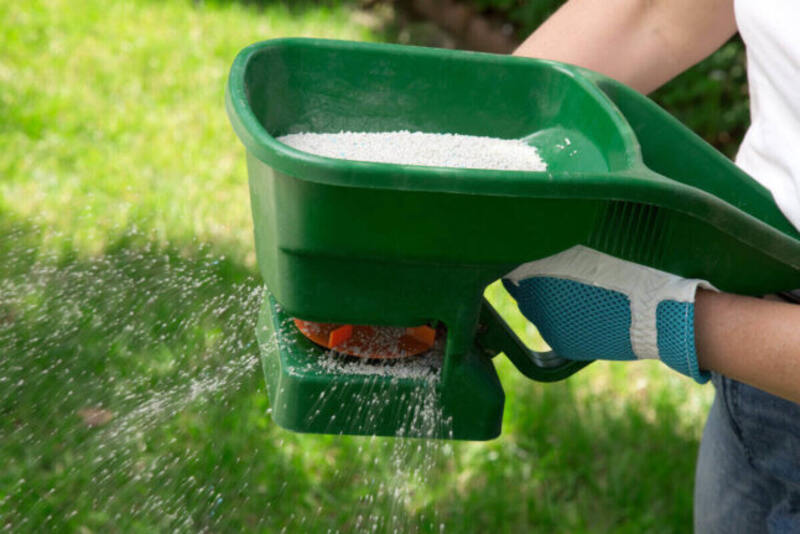
In early spring, grass sprouts and grows using the energy stored in its root system last fall. Sometimes it needs a little help.
The best moment to apply a small amount of fertilizer is in April when temperatures rise above 60°F, which is when winter grasses in Delaware speed up their growth.
With a Zoysia lawn, postpone fertilizer treatment until May. It’s a summer grass and greens up later.
Pro tip: If you haven’t tested the soil in the winter, take some samples now. The soil test results will tell you exactly what nutrients to add and in what amount. Spring is an excellent opportunity to feed the lawn with phosphorus and potassium for root development and an immunity boost if the soil is deficient.
Set Up a Weed Control Plan
Early spring is an excellent time to apply pre-emergent herbicides for summer weeds like crabgrass and goosegrass. Spread the formula 10 to 14 days before the period weed seeds germinate.
Pre-emergent formulas stay active for 4 to 8 weeks. You should apply the herbicide more than once and postpone overseeding the grass until it wears off.
Mid and late spring is the best time to hand-pull young weeds that defied the herbicide. Now their roots are small, and removing them completely is easier. Use post-emergent herbicides, if necessary, once temperatures rise above 70°F.
Warning! Don’t use any herbicides on newly sprouted turfgrass. Wait until after the third mowing, about 6 to 8 weeks from seeding.
Watch Out for Pests
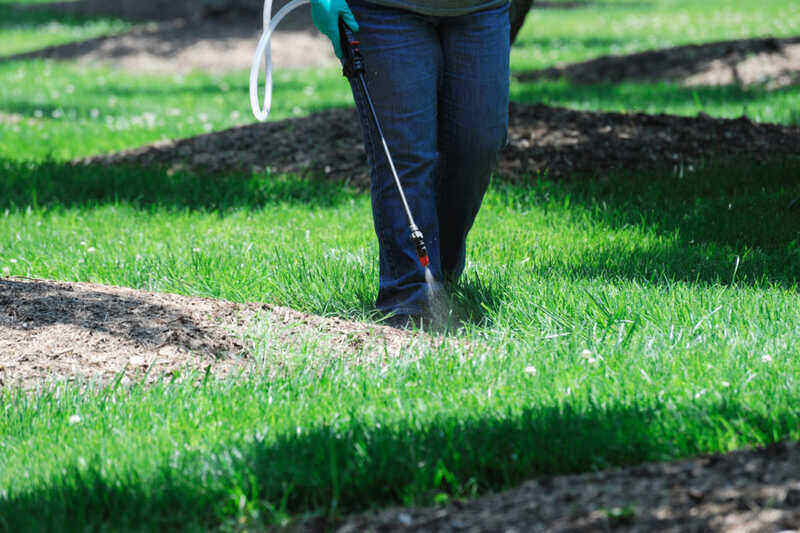
April and early May is the best time to apply preventive insecticides for chinch bugs if you had a lawn infestation last season.
Also, watch out for lawn grubs. When the weather warms up, grubs exit dormancy and feed on grass roots. If there’s a large population, you’ll see patches of brown grass on your lawn and areas where the turf pulls out easily.
Treatments are not very effective on grubs in the spring, but it’s essential to know if you have them on your lawn. During summer, females lay eggs looking for moist soil. If you stop watering the lawn, letting the cool-season grass enter dormancy, they will migrate elsewhere.
Prevent Lawn Diseases
Cool spring days are the best trigger for nasty fungal diseases that can harm your lawn. Brown patch, dollar spot, red thread, and powdery mildew disease are the most common. Here are the main signs to look for:
| Fungal Disease | Signs, Triggers, and Active Period |
| Brown Patch | Signs: Large circular and irregular patches of brown, dead grass. Appears: When temperatures are under 68°F on grass that has been wet for a prolonged period. Active: Spring and fall. |
| Dollar Spot | Signs: Dollar coin-size white, tan, or straw-colored grass patches. Appears: On drought-weakened and overwatered grass. Active: During spring, when night temperatures go above 50°F. |
| Red Thread | Signs: Patches of brown, unhealthy grass with red threadlike growths. Active: Spring and a part of the summer. |
| Powdery Mildew | Signs: Grass looks covered in white powder. Appears: In shady areas with poor air circulation, high humidity, and cool temperatures. Active: Spring and fall. |
To prevent fungal lawn diseases:
- Ensure good soil drainage by dethatching and aerating.
- Water the right amount and only in the morning (avoid evening irrigation).
- Trim surrounding trees and shrubs to improve air circulation and reduce shade.
- Apply a preventive fungicide.
Summer Lawn Care Tips for Delaware

When summer heat rolls across the streets and lawns of Delaware, keeping the grass properly mowed and watered is essential for its health. Here’s what you’ve got to do.
Mow the Grass Taller
Mow cool-season grasses at 3 to 4 inches and keep warm-season grasses 2 inches tall.
Longer grass blades have more surface for photosynthesis, promote deeper roots, and shade the soil. Keeping the grass taller during summer improves resilience to drought, stress, diseases, and pests.
Fertilize Warm-Season Grasses if Necessary
Apply a slow-release fertilizer from late May to early June if you have a warm-season Zoysia lawn. It provides the grass with valuable nutrients for the growing season.
Winter grasses fight drought and heat stress during summer and often enter semi-dormancy. Postpone fertilizing winter grasses, aka cool-season grasses, until August, when the weather cools down, rainfall gets serious, and cool-season grasses start to thrive again.
The Delaware Livable Lawns Program also recommends against using fertilizers between June 16 and August 14 to avoid leaching nitrogen and phosphorus into local bodies of water.
Irrigate Deeply and Less Often
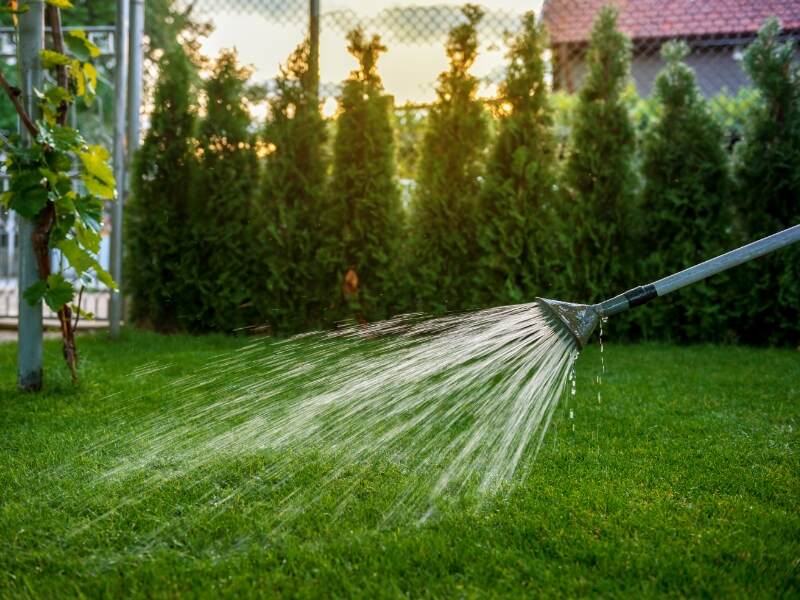
July is the hottest month of the year in Delaware. Temperatures can reach 88°F, and cool-season grasses are stressed and tend to enter semi-dormancy as a protective measure.
This often happens in the southern inland areas, around Seaford and Laurel, where the heat is more intense and dry. When the grass goes dormant, stop watering. It greens up again when the temperatures lower and rain begins to fall.
Proximity to water softens the heat in the northern coastal areas around Wilmington and Middletown. Here, temperatures are a few degrees lower, and winter grasses can stay green throughout most of the summer with proper watering. The grass also stays green and needs water on lawns with warm-season varieties, like Zoysia or Bermuda.
Ensure 1 to 1.5 inches of water per week, considering rainfall. Irrigate deeply, getting moisture 4 to 6 inches into the ground, and less often (once or twice a week if rain is scarce). Water early in the morning to prevent evaporation.
Get Rid of Weeds
By June, you’re already dealing with grown weeds that you must hand-pull, cut with a scuffle hoe, or treat with post-emergent herbicides.
While you can treat summer annuals that have escaped your spring treatment with homemade and natural weed killers, perennials are much more stubborn. They can be eradicated only by pulling out the entire root system or spot-spraying with a systemic herbicide such as glyphosate.
Be careful when using herbicides if there are pets or children around.
Fall Lawn Care Tips for Delaware

Your main job during autumn is to keep the lawn clear of fallen leaves. It’s also the perfect time to overseed the lawn and fertilize.
Rake the Leaves
From late August to mid-November, Delaware trees let loose their colorful leaves on every lawn nearby. While beautiful and a great source of nutrients, dead leaves are bad for your lawn because they are:
- Food and shelter for pests.
- A cool and moist environment for fungi.
- A barrier that prevents sunlight from reaching the soil.
Keep them from staying on your grass for too long. Rake the lawn periodically and add the leaves to your compost bin or use them as mulch on flower beds.
Fertilize Cool-Season Grasses
During fall, cool-season grasses use more and more of their energy for developing roots and tillers. Adding fertilizer at this time will ensure good cold resilience during the winter and healthy, robust grass next year. Make one or two applications with slow-release fertilizer from late August to mid-October.
Don’t fertilize warm-season grasses this late into the season. They are preparing for winter dormancy.
Lower Mowing Height
In Delaware, cool-season grasses keep growing strong well into October, so fall is also a mowing season.
While still warm outside, days are getting shorter, and the sun is weakening. It’s time to gradually reduce the mowing height, allowing more sunlight to reach the soil and keep it warm.
Dethatch and Aerate the Lawn
Fall is a good season to dethatch the lawn and aerate the soil if you haven’t done that in the spring. It frees the soil surface for receiving seeds and sunlight and improves texture for better water and fertilizer absorption.
Overseed and Repair the Lawn
August 15 to September 30 is the best time to seed cool-season grass in Delaware, whether you’re installing a new lawn, making the old one thicker, or patching some bald spots.
It’s still warm enough for seeds to germinate and develop roots, but it’s slowly getting colder, and summer weeds are dying out. The new grass has the perfect conditions to grow with less competition from weeds.
Remove Autumn Weeds
Autumn is an excellent time to remove broadleaf weeds and sedges on your lawn by hand-pulling or applying selective herbicides.
If you overseed in the fall, remember not to use herbicides on a newly sprouted lawn. Wait until you mow the new grass at least three times to ensure it can handle the chemicals.
Prepare Your Lawn Care Tools for the Winter
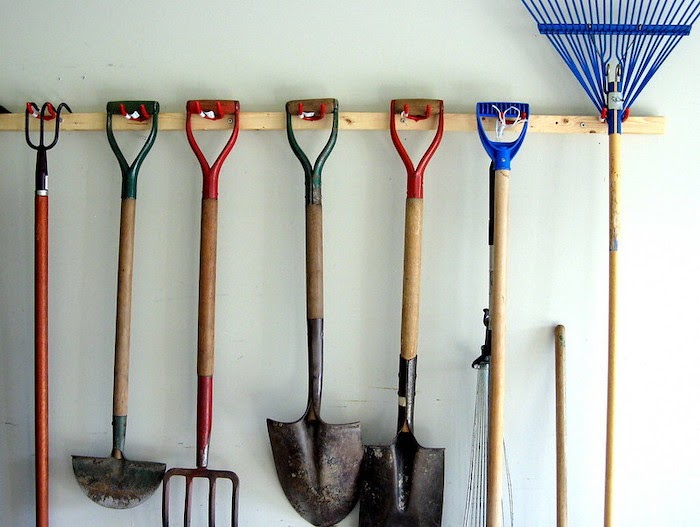
Delaware winters don’t allow much gardening time, so late fall is the moment to start putting your tools away safely. Take your time to wash hoes, rakes, spades, gardening scissors, and forks. Let the tools dry out.
Remove all dirt and debris from the lawn mower deck and blades. Sharpen blades and coat all metal elements in a thin layer of linseed oil to prevent rust.
Also, apply oil on moving parts and remove the gas from the lawn mower’s tank. Store all the tools in a covered building to protect them from snow and rain and keep them away from chemicals that might damage the metal.
Winterize the Irrigation System
In late fall, winterize the irrigation system by checking it, replacing broken parts, and emptying all water from the pipes to protect the system from freezing and cracking. Also, turn off automatic sprinkler controllers.
Winter Lawn Care Tips for Delaware
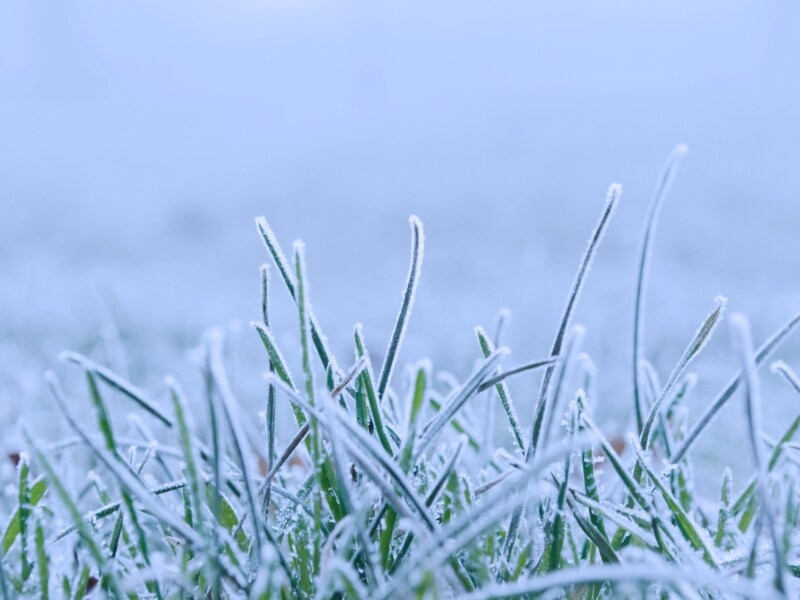
From December to late February, enjoy the warmth inside your house and keep salt, foot traffic, and outdoor furniture away from the lawn.
Analyze and Make Plans for the Next Season
Delaware’s cold winters are the perfect moment to plan your next lawn care season with a warm cup of tea or hot chocolate in your hand. Think about what went right and wrong last year and what you want to change or improve.
Maybe you reduce the turf surface and add some Delaware native ground covers, shrubs, or flowering plants to make your yard look more interesting, lower its maintenance requirements, and provide food for local pollinators.
You may want to change the grass type or try another fertilizer or herbicide. Or even look into hiring lawn care services for a professional approach to your projects next year.
Test Soil pH and Treat If Unbalanced
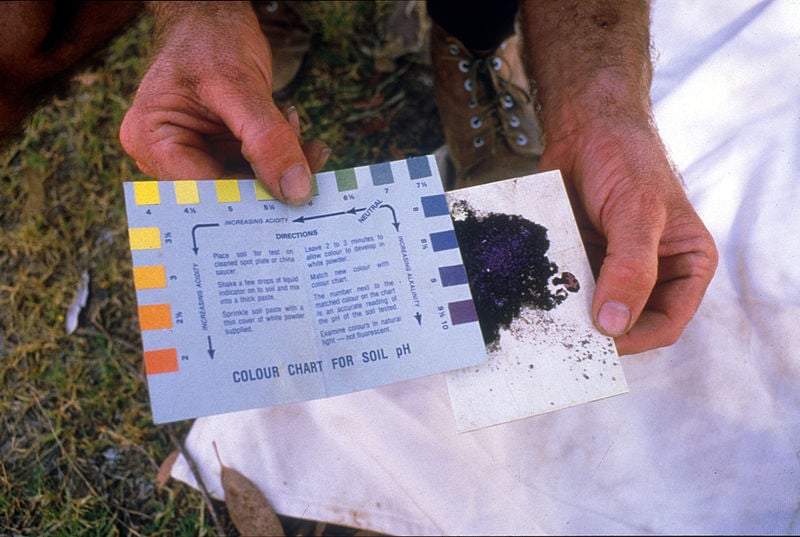
Delaware often gets warm spells during winter when the soil is soft enough to take samples and check the pH. Testing soil pH once every three years is a valuable lawn management practice that makes the difference between a nice lawn and a thriving one.
In time, Delaware soil tends to get acidic, limiting nutrient absorption. The grass gets weaker, and fertilizers fail to bring about the expected improvements.
Correcting acidic pH with lime is easy but slow. The treatment needs a few months to do the job and take pH back between the ideal 6.0 to 7.0 range that grasses love. You need to apply lime to the lawn during winter to prepare the soil for spring and the first fertilization of the year.
Keep the Lawn Clear of Debris and Salt
It’s easy to neglect the lawn during winter. While you don’t need to mow or water, you must protect the grass from foot traffic damage and keep toys, furniture, and other heavy objects away from the lawn.
Also, don’t keep snow on the lawn when cleaning the driveway, and take special care when spreading salt on the pavement around the lawn. If salty water leaks into the soil, you might have bald patches in the spring.
FAQ
The best time to fertilize a cool-season lawn is late August to mid-October. You can also apply a small amount of fertilizer in the spring to promote green-up but remember you’ll also feed summer weeds.
To grow healthy, thriving grass in Delaware:
● Seed a new lawn from August 15 to September 30.
● Fertilize between August and mid-October.
● Overseed twice a year, in spring and fall.
● Aerate and dethatch once a year.
● Water only when necessary.
● Let cool-season grasses go dormant during summer.
● Mow the lawn at the right height.
The best time to aerate, overseed, and fertilize a lawn in Delaware is late summer and early fall. It’s when the grass benefits the most from amended soil. The second best time to aerate is early spring, especially if a heavy blanket of snow compresses the soil over the winter.
Tall fescue is the best grass for Delaware lawns. It is the last to brown up in the summer, with good tolerance to heat and drought. Its moderate salt tolerance also makes it suitable for Delaware’s coastal properties.
If you’re considering limiting the turfgrass area and adding some native grasses, switchgrasses are your top option. Native to Delaware Bay and its coastal regions, they are beautiful, low-maintenance, and drought-resistant.
Enjoy a Healthy, Thick Lawn in Delaware Today!
With so many changes in weather across the year, keeping a lawn healthy in Delaware can be challenging. Luckily, a reliable lawn care company is always nearby to solve any problem. Whether you live in Wilmington, New Castle, Newark, or anywhere else in the Diamond State, LawnStarter has experienced professionals standing by to care for your lawn.
Main Photo Credit: PeakPX


